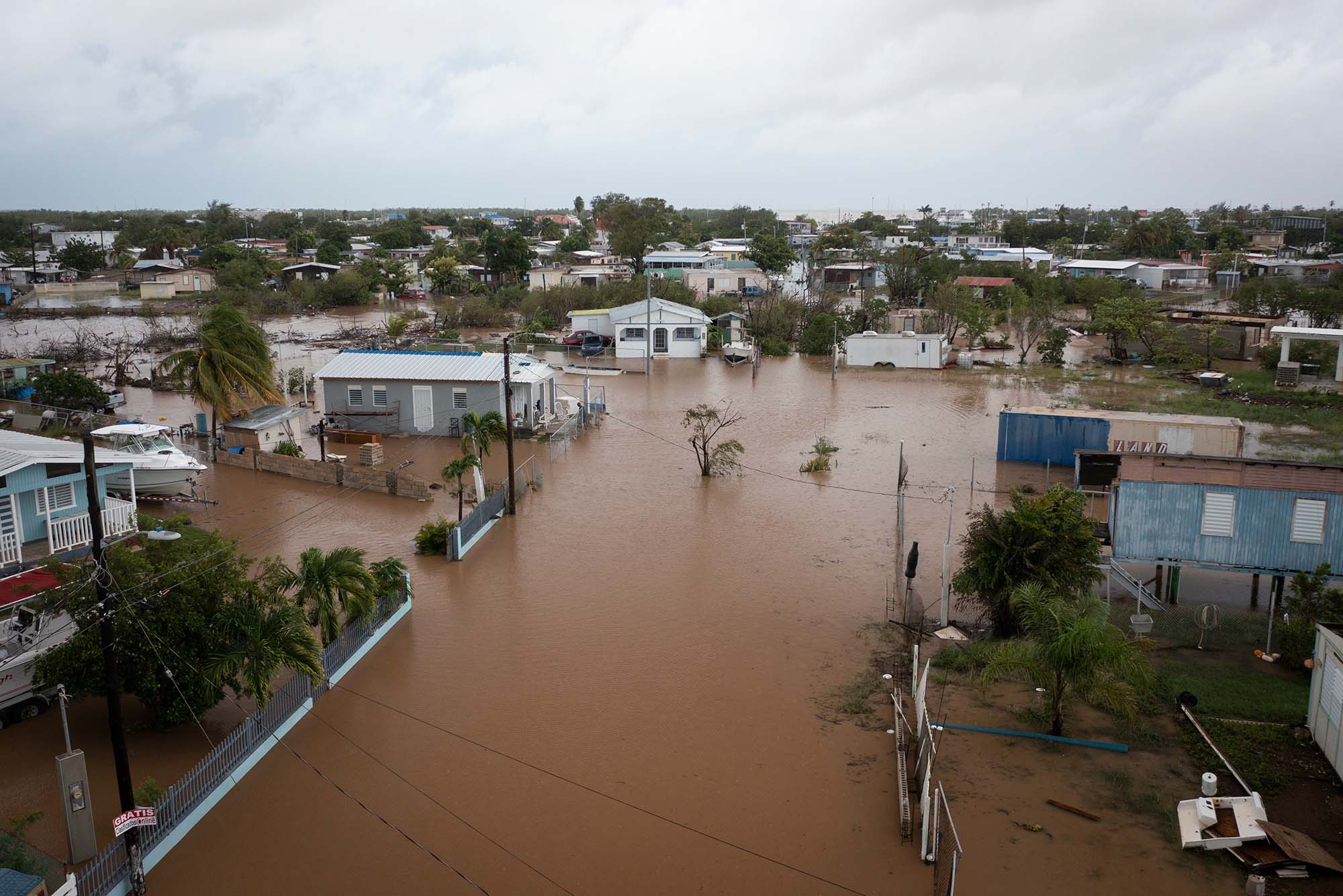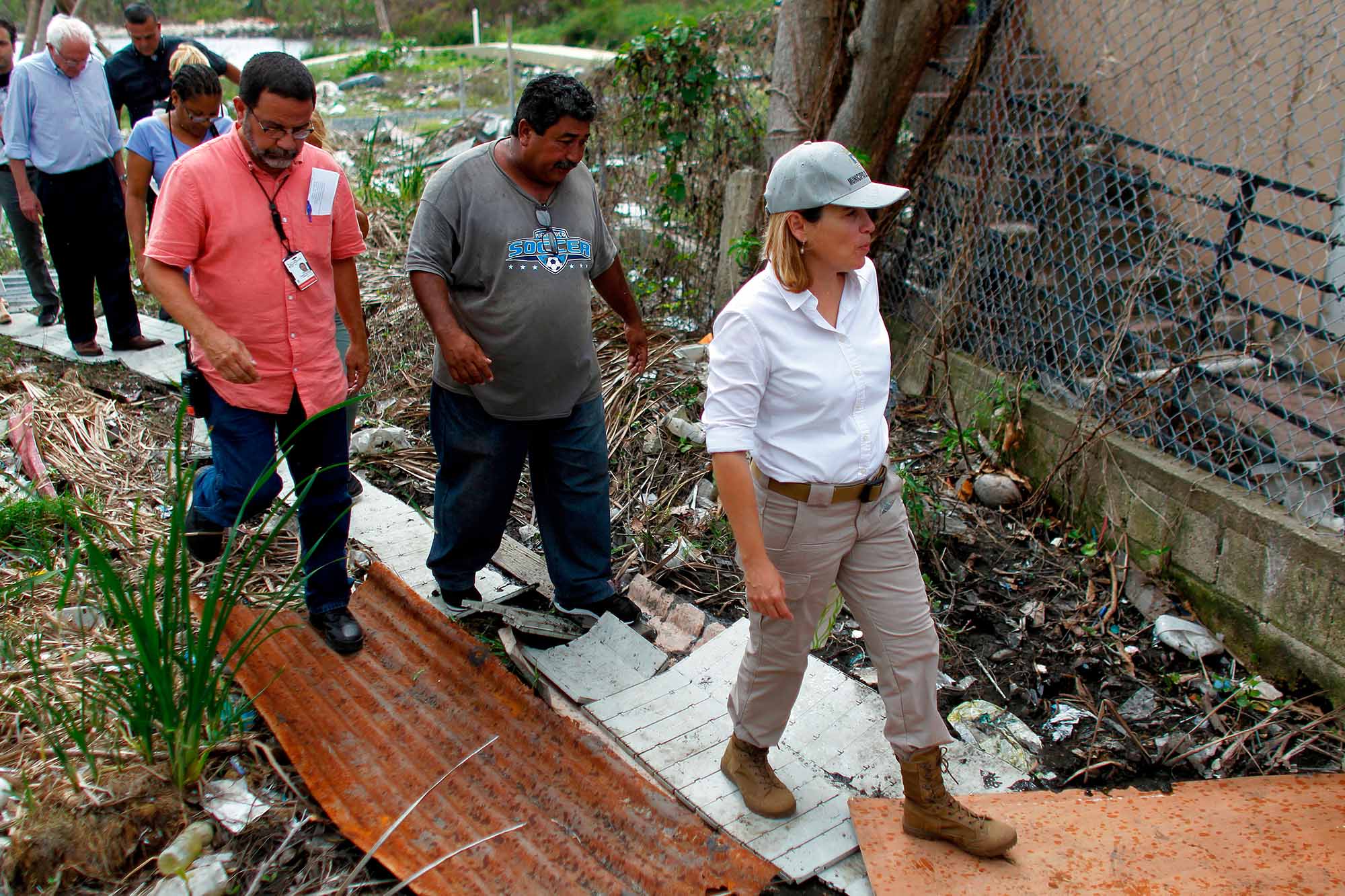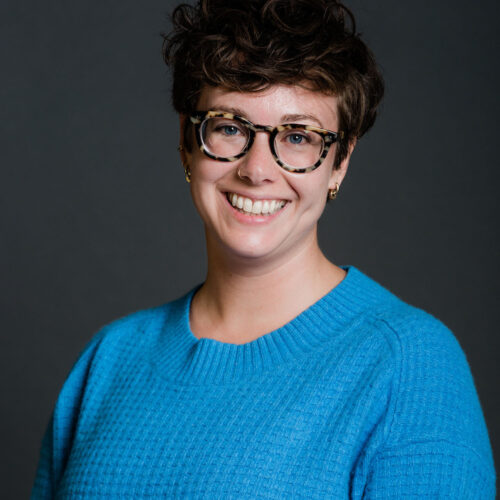Hurricane Fiona “Was Literally a Perfect Storm,” Says Former San Juan Mayor Carmen Yulín Cruz Soto
Five years after Hurricane Maria devastated Puerto Rico, BU alum weighs in on what needs to change before the next storm

Hurricane Fiona caused flash flooding and an island-wide power outage when it hit Puerto Rico on September 19, forcing many hospitals to resort to generators. Photo by Alejandro Granadillo/AP Photo
Hurricane Fiona “Was Literally a Perfect Storm,” Says Former San Juan Mayor Carmen Yulín Cruz Soto
Five years after Hurricane Maria devastated Puerto Rico, BU alum weighs in on what needs to change before the next storm
More than a million people still don’t have power in Puerto Rico and the Dominican Republic a week after Hurricane Fiona devastated the island communities.
“It was literally the perfect storm at the corner of climate change, bureaucracy, and incompetence,” says Carmen Yulín Cruz Soto (CAS’84, Hon.’18), the former mayor of San Juan, Puerto Rico’s capital city.
The hurricane, which dropped 30 inches of water in some parts of the US territory September 19, washed out bridges, roads, and Puerto Rico’s fragile electrical grid, leaving the entire population in the dark for days. By Friday, a full four days after Fiona made landfall, two thirds of the island’s 1.5 million residents remained without electricity.
President Joe Biden pledged to help. On Thursday he announced that the federal government would cover all costs related to relief for the next month.
“I’ve authorized 100 percent—100 percent federal funding for debris removal, search and rescue, water restoration, and shelter and food for the whole month,” Biden said at press conference at Federal Emergency Management Agency (FEMA) headquarters in New York. “To the people of Puerto Rico who are still hurting from Hurricane Maria five years later, they should know that we are with you. We’re not going to walk away. I mean it.”
Indeed for many, including Cruz Soto, the destruction is a somber—and frustrating—reminder of the slow rebuilding process since Hurricane Maria wrought havoc almost exactly five years ago to the day. She drew national headlines then for her outspoken criticism of the federal government’s efforts to provide adequate aid following the Category 4 hurricane, which left nearly 3,000 residents dead.
“There seemed to be a lack of urgency of understanding that if the recovery wasn’t done right, something like Fiona would definitely happen,” Cruz Soto says. “That’s exactly why this has happened.”

Cruz Soto, currently the Mount Holyoke College Harriet L. Weissman and Paul M. Weissman Distinguished Fellow in Leadership, was in South Hadley, Mass., when Fiona swept through Puerto Rico. She stayed in touch with family, friends, and municipal officials at home, and flew home Friday morning to help in the recovery effort.
Cruz Soto spoke with Bostonia about what she was hearing from people on the ground, and how things went so wrong.
Q&A
with Carmen Yulín Cruz Soto
Bostonia: What are you seeing or hearing from folks in Puerto Rico? What is it like there now?
Cruz Soto: I’ve heard desperation from a lot of mayors and community leaders. There’s a lack of transparency from LUMA [Puerto Rico’s privatized electric company] about when the heck the power will be restored. LUMA had a press conference when they took over electric service to say they’re ready for a disaster, but they didn’t have a contract with a helicopter company until yesterday. That doesn’t bode well for making sure that the grid is taken care of.
There’s a lot of desperation, because in Puerto Rico when there’s no electricity, there’s no water in many places. Hospitals are already working critical areas with a generator. And people may think, oh they have a generator, they’re good, but generators don’t run forever, and they have to be stopped to be serviced. People have already died from using generators in their homes. People are already saying they don’t have insulin because their refrigerator isn’t working. That’s the kind of thing that needs to be avoided, because it begins to spiral into something much worse for the whole population.
Bostonia: What do you think should be done to make the island more resilient to natural disasters?
Cruz Soto: Right now, Puerto Rico’s electrical system is an intricate system that runs along four cardinal points. We should transform and subdivide that huge grid into at least five grids that cover the northeast, northwest, southeast, southwest, and central parts of the island. That way if a hurricane comes in from the north, it only affects the power in part of Puerto Rico.
But more than that, we need to start moving towards renewable energy sources, specifically solar. It’s easier to deal with a situation after a storm if you have solar panels that can be brought back online quickly.
Puerto Rico should become an example of resilience and transformation. FEMA should be giving all the [relief] money and aid directly to the municipalities and cut some of the red tape.
We also don’t currently have the people power that it will take to rebuild. Puerto Rico will need thousands of people for this reconstruction: plumbers, electricians, construction workers, the list goes on. You could offer some kind of tax advantage to people who want to retrain to help with the people power that’s needed, and that could be done in conjunction with trade unions.
We’re resilient, but there’s a point at which we know we can stand up, but heck, we don’t want to keep falling down.
Bostonia: The island was still recovering from 2017’s Hurricane Maria. What does this new damage mean for recovery efforts?
In some ways, it feels like there’s been five years wasted. It’s difficult to see that we haven’t gotten as far along in the reconstruction as we should have by now.
It’s frustrating, but it also makes you mad. With Maria, the problem was that we didn’t have the money [for recovery]. This time, the money is there but the central government of Puerto Rico isn’t allocating it to the municipalities—the ones on the front lines actually providing services—fast enough.
People say that Puerto Ricans are resilient. Actually, if you look up the word ‘resilient’ in the dictionary, there should just be a Puerto Rico map in there. In the last five years, we’ve gone through two hurricanes, two coastal storms, political unrest, financial bankruptcy, two earthquakes, and a pandemic. We’re resilient, but there’s a point at which we know we can stand up, but heck, we don’t want to keep falling down.
Preparing for the future will require structural changes, and the people’s will to make structural changes. If the United States and Puerto Rico want—and we must—to find permanent solutions to recurring problems, we must look at structural changes that will ensure that these same things don’t happen again, and that the hard lessons we learned are applied and implemented.
Bostonia: You mentioned the resilience of the Puerto Rican community. Is there anything giving you hope these days?
For once, the federal government has expressed that the primary goal is to save lives. That’s what I told President Trump [in the aftermath of Hurricane Maria], but my message didn’t get through.
Now though, when the primary goal is clear, everything else that falls from that should yield exactly that—lives saved.
But what really gives me hope is the ability of Puerto Rican people to understand that if change is to take place, they have to be the architects of that change. This is the awakening of people to understand that change doesn’t come from political power, it doesn’t come from structural power, change comes from people power.
It’s the people of Puerto Rico who have the power, and now they’re willing to exercise it.

Comments & Discussion
Boston University moderates comments to facilitate an informed, substantive, civil conversation. Abusive, profane, self-promotional, misleading, incoherent or off-topic comments will be rejected. Moderators are staffed during regular business hours (EST) and can only accept comments written in English. Statistics or facts must include a citation or a link to the citation.